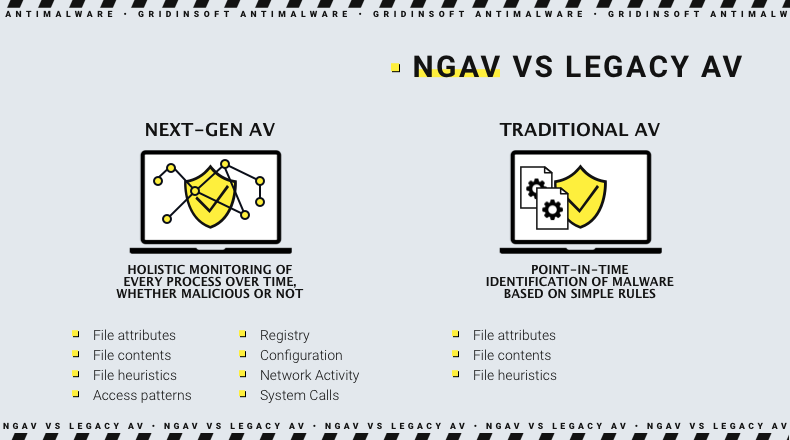Next Generation Antivirus (NGAV) refers to a modern approach to protecting computer systems from malware, viruses, and other security threats. Unlike traditional antivirus software, NGAV uses a more comprehensive set of technologies such as artificial intelligence, behavior analytics, and endpoint detection to identify and mitigate threats more efficiently.
History of the Origin of Next Generation Antivirus (NGAV) and the First Mention of It
The development of NGAV can be traced back to the early 2010s when cyber threats started to become more sophisticated and traditional antivirus methods were no longer sufficient. The emergence of advanced persistent threats (APTs) and polymorphic malware created the need for a more advanced security solution. The term “Next Generation Antivirus” began to be used around this time to describe these new methodologies.
Detailed Information about Next Generation Antivirus (NGAV)
NGAV is designed to go beyond signature-based detection, incorporating several features such as:
- Machine Learning and AI: NGAV employs machine learning algorithms to detect abnormal behavior or patterns that might signify a threat.
- Endpoint Detection and Response (EDR): This involves continuous monitoring and collection of data to identify and respond to threats.
- Cloud Integration: NGAV solutions are often integrated with cloud-based platforms, providing centralized threat intelligence and analysis.
- Behavior Analysis: By analyzing the behavior of files and processes, NGAV can identify potentially malicious activities even if the malware has not been previously encountered.
Internal Structure of the Next Generation Antivirus (NGAV)
Next Generation Antivirus typically consists of the following components:
- Threat Intelligence Engine: Collects and analyzes data from various sources to identify emerging threats.
- Behavioral Analysis Module: Monitors system behavior and correlates it with known threat patterns.
- Machine Learning Models: These models are trained to recognize malicious activities and provide real-time detection.
- Endpoint Agents: Installed on the endpoints, these agents monitor and report potential threats.
- Centralized Management Console: Allows administrators to manage, monitor, and respond to threats from a single platform.
Analysis of the Key Features of Next Generation Antivirus (NGAV)
Some key features of NGAV include:
- Real-time threat detection
- Integration with existing IT infrastructure
- Scalable and flexible deployment
- Quick response to emerging threats
- Ability to adapt to new attack techniques
Types of Next Generation Antivirus (NGAV)
| Type | Description |
|---|---|
| Cloud-Based NGAV | Leverages cloud computing for threat analysis and intelligence. |
| On-Premises NGAV | Installed locally on the organization’s infrastructure. |
| Hybrid NGAV | Combines both cloud and on-premises capabilities. |
Ways to Use Next Generation Antivirus (NGAV), Problems, and Their Solutions
- Use in Enterprises: Protecting corporate networks and sensitive data.
- Personal Use: Protecting individual users from threats.
- Problems: Potential false positives, compatibility issues with existing systems.
- Solutions: Regular updates, customization of rules, professional support.
Main Characteristics and Other Comparisons with Similar Terms
| Features | NGAV | Traditional Antivirus |
|---|---|---|
| Threat Detection Approach | Behavior-based | Signature-based |
| Integration with Cloud | Common | Rare |
| Response Time to New Threats | Fast | Slower |
| Scalability | High | Moderate |
Perspectives and Technologies of the Future Related to Next Generation Antivirus (NGAV)
Future developments in NGAV may include more extensive use of AI, quantum computing in security analysis, greater integration with IoT devices, and further advancements in real-time threat intelligence and response.
How Proxy Servers Can be Used or Associated with Next Generation Antivirus (NGAV)
Proxy servers like those offered by OneProxy can enhance NGAV by providing an additional layer of security. They can be used to monitor and filter internet traffic, aiding in the detection of malicious activities and complementing the protection provided by NGAV.





